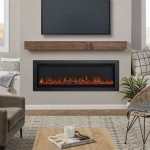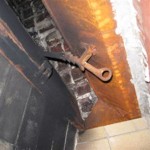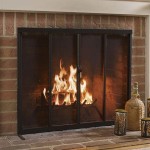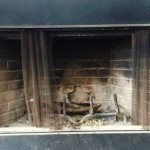Fireplace Hearth Cleaner: Essential Aspects for a Clean and Safe Hearth
Maintaining a clean and safe fireplace hearth is crucial for overall home safety and a cozy ambiance. A specialized fireplace hearth cleaner plays a vital role in this process. Here are some essential aspects to consider when choosing and using a fireplace hearth cleaner:
Types of Fireplace Hearth Cleaners:
- Solvent-Based Cleaners: These cleaners contain volatile organic compounds (VOCs) that dissolve soot, grime, and other buildup. They are effective but require proper ventilation and use with caution.
- Water-Based Cleaners: Formulated with water as the primary ingredient, these cleaners are less harsh than solvent-based options. They are suitable for gentle cleaning of light buildup.
- Foaming Cleaners: These cleaners create foam that sticks to the hearth surface, allowing it to penetrate and loosen debris. They offer a thorough cleaning experience but may require multiple applications.
- Gel Cleaners: Thick and viscous, gel cleaners cling to vertical surfaces and remove stubborn stains without dripping. They are ideal for cleaning brick and stone hearths.
Choosing the Right Cleaner:
The type of cleaner to choose depends on the material of the hearth and the severity of the buildup. Solvent-based cleaners are ideal for heavy grime and stains, while water-based or foaming cleaners are suitable for lighter cleaning. Gel cleaners are best for vertical surfaces and stubborn stains.
Application and Safety:
Follow the manufacturer's instructions carefully when applying the cleaner. Use protective gear, such as gloves and eye protection, and ensure proper ventilation. Apply the cleaner to a small area first to test its effect on the material. Let it sit for the recommended time before scrubbing and rinsing thoroughly with water or damp rags.
Frequency of Cleaning:
The frequency of cleaning depends on the usage of the fireplace. If you use it regularly, aim to clean the hearth every few uses or monthly. If you use it only occasionally, cleaning it quarterly or semi-annually should suffice.
Other Essential Aspects:
- Check the Ingredients: Some cleaners contain harsh chemicals that can damage the hearth material. Read the ingredients carefully and avoid using cleaners with abrasive or corrosive agents.
- Test in an Inconspicuous Area: Before applying the cleaner to the entire hearth, test it in an inconspicuous area to ensure it does not discolor or damage the material.
- Rinse Thoroughly: After cleaning, rinse the hearth thoroughly to remove any cleaner residue. Excess cleaner can leave behind a film or streaks.
- Use a Soft Brush: Avoid using steel wool or abrasive pads when scrubbing the hearth. These can scratch and damage the material.
- Protect from Water: If the cleaner comes into contact with water, rinse immediately. Water can cause discoloration and damage.
By following these essential aspects, you can effectively maintain a clean and safe fireplace hearth. Enjoy the warmth and ambiance of your fireplace without worrying about buildup or stains.

Maintaining Fireplace Beauty Service In Richmond Va

Chimney Sweep Cleaning Wethersfield Glastonbury Hebron Farmington

Is It Ok To Use A Fireplace During The Summer

Best Way To Clean A Fireplace Stacy Risenmay

How To Clean A Fireplace Diy Basics

How To Clean A Limestone Fireplace

How To Clean Brick Fireplaces Mantels Hearths And More My Space

How To Clean A Fireplace

Fireplace Cleaning Tutorial Kippi At Home

Fireplace Maintenance For Wood And Gas Fireplaces Sierra Hearth Home








